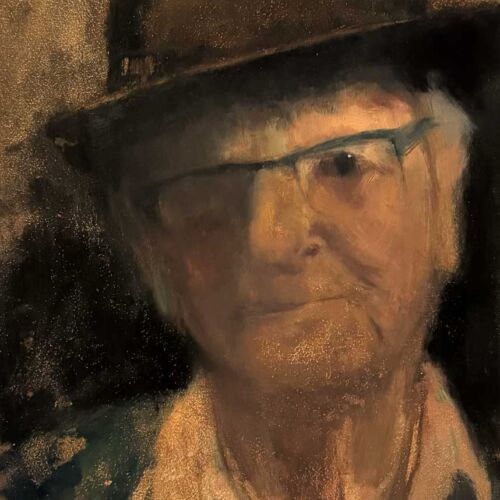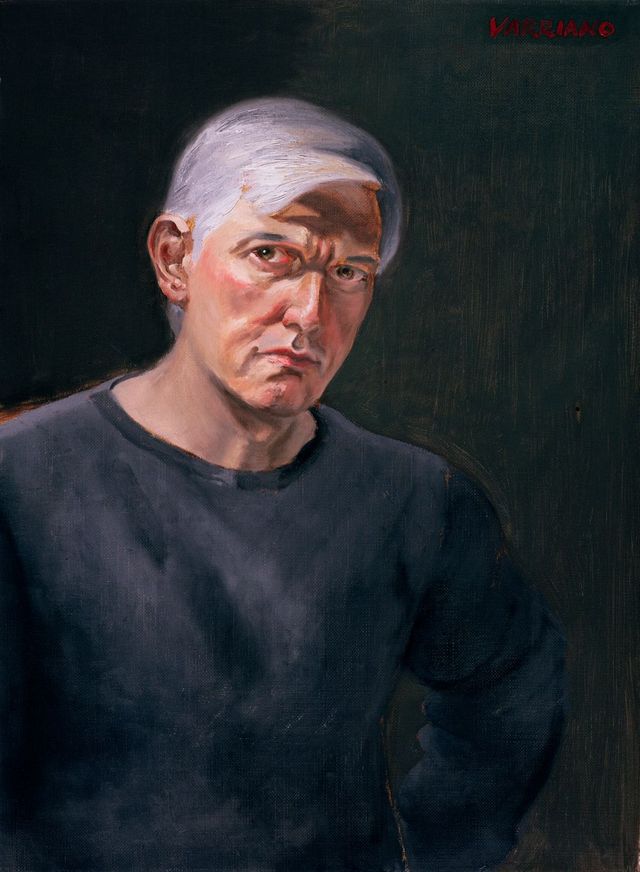Grasping Composition and Color in Figurative Oil Painting
Grasping Composition and Color in Figurative Oil Painting
Blog Article
A Journey Via the Globe of Figurative Oil Painting: Finding the Distinct Attributes and Emotional Depth of the Medium

History of Figurative Oil Paint
Arising during the late Middle Ages and flourishing throughout the Renaissance, figurative oil painting has a rich history that shows both creative advancement and cultural advancement. Initially, oil paints were utilized in Europe as a means to enhance the brightness and deepness of shade in artworks. Artists such as Jan van Eyck spearheaded the medium, showing its possible to capture intricate information and appearances, hence allowing for a more natural representation of the human kind.
As the Renaissance progressed, distinguished figures like Leonardo da Vinci and Michelangelo expanded the limits of metaphorical oil paint. They highlighted physiological precision and perspective, developing jobs that shared emotion and narrative depth. The medium's flexibility permitted experimentation with light and darkness, bring about the advancement of chiaroscuro methods that further enhanced the visual experience.
Distinct Attributes of the Tool
The development of figurative oil painting has been significantly influenced by the unique features of the tool itself. Oil paint, composed of pigments suspended in oil, provides artists a remarkable versatility that enables a broad array of coatings and structures. Its sluggish drying time allows careful mixing and layering, which can create depth and luminance unattainable in other mediums.
Additionally, oil paint's rich pigmentation provides vibrant shades that keep their strength in time. This particular is important in metaphorical painting, where capturing the nuances of complexion and psychological expressions is vital. The capability to attain refined gradients and soft changes boosts the natural high quality of subjects, enabling musicians to convey complicated emotions.
Additionally, oil paint adheres well to different surfaces, such as steel, timber, and canvas, expanding the range of creative expression. The medium's versatility supports various approaches, from in-depth realistic look to meaningful brushwork, making it possible for musicians to explore their private styles.
Eventually, the one-of-a-kind properties of oil paint not only enhance the aesthetic experience yet likewise encourage musicians to communicate profound narratives, making figurative oil painting a deeply evocative art form.
Designs and strategies Utilized
Within the realm of figurative oil paint, artists employ a varied range of techniques and designs that add to the depth and splendor of their work. One prominent strategy is glazing, where clear layers of paint are used over dried layers, permitting light to permeate and reflect, enhancing luminance and depth. This approach is commonly used to attain a sense of realistic look and complexity in complexion.
One more strategy is impasto, where thick layers of paint are applied with a palette knife or brush, creating a textured surface area that adds a three-dimensional high quality to the paint. This style can stimulate a visceral feedback, drawing the visitor in through its responsive nature.
Artists likewise explore different brushwork designs, from fine, thorough strokes that capture complex features to wider, extra expressive strokes that communicate movement and emotion (figurative oil painting). The selection of color combination dramatically influences the general state of mind of a piece, with warm tones usually passing on sensations of comfort and awesome tones recommending moody
Moreover, the combination of chiaroscuro, the comparison in between light and shadow, enables musicians news to develop dramatic effects that improve the narrative top quality of their job. Each technique and style is meticulously selected to elevate the audience's experience and understanding.
Psychological Deepness in Metaphorical Art
Psychological deepness serves as a cornerstone in figurative art, enabling artists to go beyond simple depiction and involve visitors on an extensive level. This emotional resonance is frequently accomplished with the nuanced representation of human numbers, expressions, and communications. Artists harness the power of shade, darkness, and light to evoke sensations that reverberate deeply with the target market, developing a natural link to the subject.
In metaphorical oil paint, the complex layering of paint can show the intricacies of human emotion. The choice of palette, whether warm or awesome, plays a crucial role in establishing the state of mind and ambience of an item. Softer shades may stimulate peace and self-questioning, while strong, contrasting shades can interact tension and dramatization.

Influential Artists and Their Works
Many influential artists have actually significantly shaped the landscape of metaphorical oil painting, each contributing one-of-a-kind perspectives and methods that proceed to inspire modern makers. Among these musicians, Lucian Freud stands out for his intense emotional deepness and raw portrayal of the human type, usually blurring the lines between appeal and degeneration. Freud's jobs, characterized by thick, impasto check my site brushstrokes, invite customers to challenge the complexities of identity and vulnerability.

Similarly, Andrew Wyeth's precise realism in pieces like "Christina's World" records extensive narratives within relatively easy compositions. His use light and darkness stimulates a sense of nostalgia and psychological vibration, drawing audiences into the intimate globes he depicts.
In the realm of modern art, Kehinde Wiley has actually gotten recognition for his vibrant, epic pictures that challenge traditional ideas of depiction. By placing individuals of shade in contexts similar to classical portrait, Wiley's work redefines the canon of art background.
These musicians, alongside others, have not just enriched metaphorical oil painting yet have also increased the dialogue bordering identity, feeling, and culture, making sure that the medium stays an important kind of expression in the art world. figurative oil painting.
Verdict
In final thought, metaphorical oil painting continues to be a powerful tool that encapsulates the intricacies of human emotion with its abundant pigmentation and functional techniques. The historic evolution of this art type, incorporated with its distinct characteristics, permits extensive artistic expression. Methods such as glazing and impasto boost the emotional vibration of each item, while the contributions of prominent musicians proceed to inspire and shape the discussion surrounding this classic genre. The journey via figurative oil paint reveals its enduring value in the art world.
The expedition of metaphorical oil paint supplies an extensive understanding into the interplay of technique, emotion, and historic context that defines this age-old tool. Oil paint, made up of pigments suspended in oil, provides musicians an impressive versatility that permits for a large array of surfaces and structures.Within the realm of figurative oil painting, artists employ a diverse array of techniques and styles that contribute to the deepness and splendor of their job.Many significant musicians have actually substantially shaped the landscape of figurative oil painting, each contributing unique perspectives and strategies that proceed to influence contemporary developers.In conclusion, figurative oil paint continues to be an effective medium that encapsulates the intricacies of human feeling with its rich pigmentation and functional strategies.
Report this page